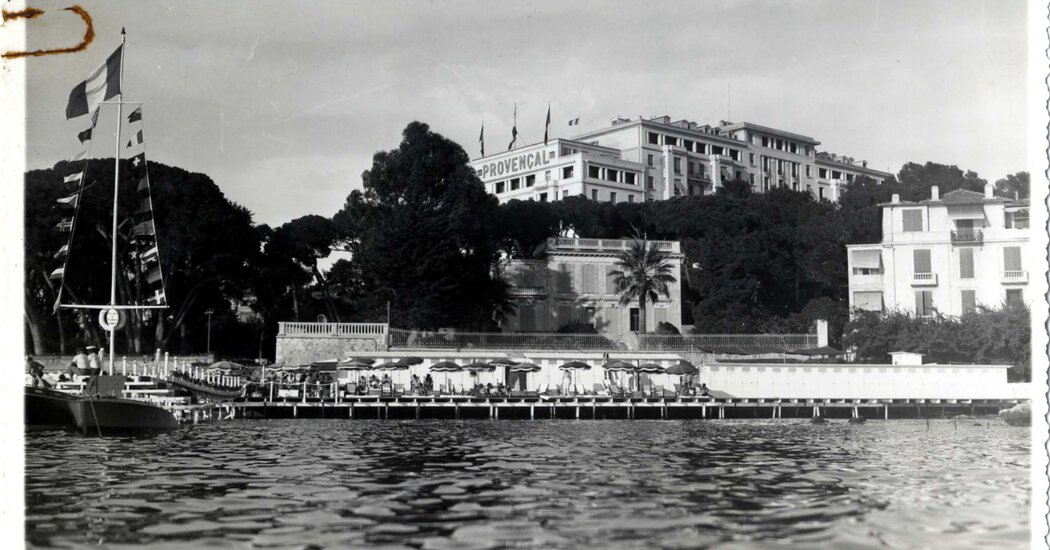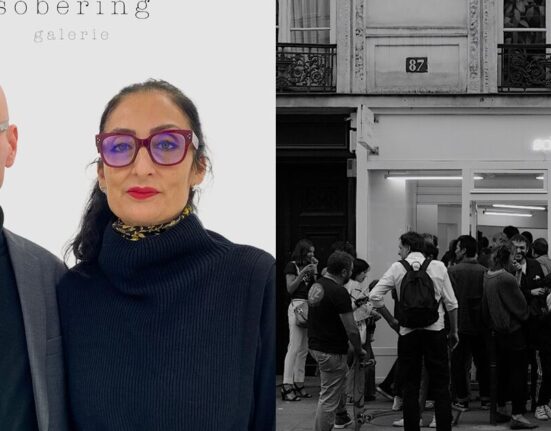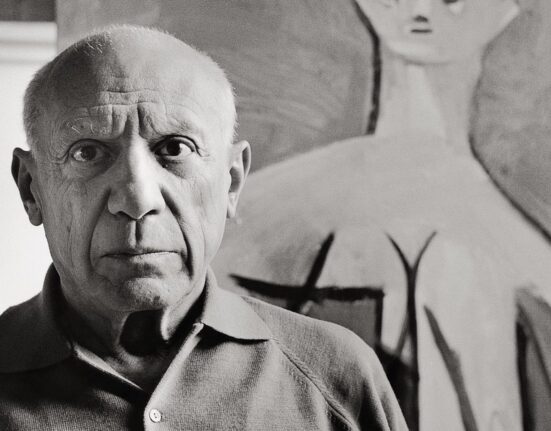John Caudwell was visiting the French Riviera in 2006 when he noticed workers swarming over a derelict beachfront building, a graffiti-covered hulk that had intrigued him for years.
The English businessman knew the 10-story building at the western end of Cap d’Antibes was the former Hôtel Le Provençal, a faded star that had helped to make the Riviera one of the world’s most glamorous holiday spots.
Opened in 1927, Le Provençal drew such luminaries as Coco Chanel and the brightest stars of Hollywood to the former fishing village of Juan-les-Pins. The hotel’s closure 50 years later cleared the way for rivals St.-Tropez and Cannes to overtake Juan-les-Pins.
“When I saw some work going on, I thought, ‘Oh, that’s wonderful that that historic building is going to be renovated,’” Mr. Caudwell said, “because it was a ruin that was probably the most prominent building on the whole of that coastline and finally somebody was doing something with it.”
Two years later, Mr. Caudwell was cycling past the building during a visit when he saw that “suddenly, there was no work going on.”
“I was thinking ‘What’s happened there?’ and there was a telephone number on the front of the building, so I thought ‘Let’s call up and see what’s happening,’” he said.
“What was happening was that the crash of 2008 had caused financial difficulties with a lot of property developers, and they were amongst those and couldn’t continue the works.”
Mr. Caudwell, on the other hand, had plenty of money.
Having sold his mobile phone business Phones 4U for about 1.5 billion British pounds (then about $2.8 billion), he had the financial means to buy out Cyril Dennis, a British property developer who had made a fortune investing in London’s Docklands district in the 1980s but could no longer service the bank debts he was using to convert Le Provençal into luxury apartments.
After negotiations over several years, Mr. Caudwell bought the hotel in 2014, along with several associated properties such as the hotel’s tennis club a little more than a mile farther down the sandy coast.
His conversion of the 290-room hotel into 39 luxury apartments is now in its final stretch, with 300 workers still clambering around a site with a bulk and height that would be impossible to build under current zoning regulations, especially so close to the beach.
The site’s storied history began, according to the hotel’s archives, in 1923 when the composer Cole Porter rented a villa near Juan-les-Pins and invited some fellow Americans to visit. The U.S. railway heir Frank Jay Gould and his wife, Florence, also paid their first visit to the village.
Until then the Riviera had been purely a winter destination, and the fashionable set would never dream of sunbathing as tans were for farmers and laborers.
The writer F. Scott Fitzgerald rented a villa beside the town’s thin strip of sandy beach and later set his work “Tender Is the Night” in what the novel describes as “the constant carnival at Juan-les-Pins, where the night was musical and strident in many languages.”
Mr. Gould built Le Provençal in a pine forest next to the writer’s villa. The first luxury hotel of this scale on the Côte d’Azur, it was an instant hit, drawing European socialites and artists alongside American artists, financiers and politicians.
According to published reports at the time, Chanel invented pajamas as beachwear there. Ernest Hemingway sat at the bar, and Edith Piaf partied in the ballroom. Picasso painted the beach scenes, and Man Ray photographed them.
Charlie Chaplin had a lengthy romantic affair at Le Provençal after filming “City Lights.” Winston Churchill brooded in his room after missing out on a Cabinet promotion, and Ella Fitzgerald serenaded locals from her window.
In 1931 the summer season overtook the winter season for the first time, as the hotel’s guests helped to make sunbathing fashionable. One of the barmen, Leo Roman, experimented that year with the idea of skiing behind a motorboat, and the first water-skiing world championship was held in front of the hotel in 1949.
From 1960 an open-air jazz festival in the park between the hotel and the beach — named Frank Gould Square — became a magnet for the giants of jazz, including Louis Armstrong and Miles Davis. John Coltrane later locked himself in his room at Le Provençal to prepare for the debut of his masterpiece “A Love Supreme.”
When the British singer Peter Sarstedt wrote his 1969 hit “Where Do You Go to My Lovely?,” it was no surprise which beach resort he chose for Marie-Claire, the dazzlingly chic subject of his lilting ballad: “When you go on your summer vacation, you go to Juan-les-Pins …”
In 1972, the Gould family sold the hotel to the Paris-based jeweler Alexandre Reza, whom Sotheby’s once described as the world’s “greatest gem merchant.”
Mr. Reza fell into a deadlock with local authorities and residents who opposed his plan to tear the hotel down and erect an apartment complex. Thwarted, he fired the staff and closed the hotel in 1977 for renovations that never happened.
Bernard Deliquaire, who was 7 years old when Le Provençal closed, said children played in the disused but still-furnished building, which loomed over the town like a giant haunted house. Adults broke in to use it as a vantage point for viewing the jazz festival.
Mr. Deliquaire, now a 53-year-old property manager and a member of the municipal council, said he had despaired of anybody ever reviving the building.
“I grew up knowing it as a blot on an otherwise beautiful landscape, so it is amazing that it is coming back to life,” he said.
Led by the Parisian architecture agency Affine Design, Mr. Caudwell’s conversion has taken almost a decade of cooperation with local heritage officials to protect and restore its Art Deco design and styling.
Builders say they went through seven layers of paint before finding the original milky white color that is now being restored.
The apartments range from a one-bedroom unit for 1.8 million euros (about $1.9 million) to a seven-bedroom penthouse for just over 43 million euros. Each of the three penthouses has its own swimming pool, terrace and a private elevator to an underground garage, while four other “super-residences” also have private pools and parking.
The views from the higher floors span the coast from Cannes in the west to Nice and Monaco in the northeast, and the Alps are clearly visible inland. Nice airport is about 25 minutes away, ski resorts are within 90 minutes and there are 10 golf courses within 30 minutes.
The complex will offer the concierge services of a hotel, with a private cinema, gym, child care and spa, with staff ready to do grocery shopping or secure a yacht berth in the nearby Port Gallice marina.
The marketing campaign for the apartments will not start until early next year and work is scheduled to be completed a year later but two apartments have already been sold, one to a New York-based couple, another to a French buyer.
Lars Christiaanse, the sales director for the project, expects U.S. buyers to show the most interest given the American role in the building’s history and the lead that U.S. buyers have taken in upmarket property purchases around the world.
Mr. Deliquaire, the local official, said the council would remodel the entire beachfront near the complex over the next two years, and officials hope the town’s former luster will be regained with the opening of the apartment complex, which will include four boutique stores and a restaurant.
Philippe Baute, the general manager of the local tourism bureau, shared the optimism about reviving the town’s reputation among upmarket visitors and shoppers.
“By summer 2025, the whole seaside district of Juan-les-Pins will have undergone a transformation and should be in a position to attract a new higher-end commercial fabric,” he said.






